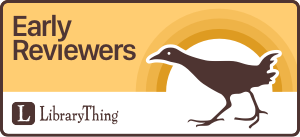

LibraryThing is pleased to present our interview with illustrator, author and cartoonist Bob Eckstein, whose work has appeared in such publications as the New Yorker, New York Times, Reader’s Digest, Smithsonian Magazine, and Atlas Obscura, and who has been exhibited in the Cartoon Art Museum of San Francisco, Smithsonian Institute, The Cartoon Museum of London, and others. Eckstein’s The History of the Snowman was published in 2017, and addressed the significance of these icy creations, while his more recent 2022 The Complete Book of Cat Names (That Your Cat Won’t Answer To, Anyway), offered a humorous, cartoon-filled guide to naming our feline friends. His Footnotes from the World’s Greatest Bookstores: True Tales and Lost Moments from Book Buyers, Booksellers, and Book Lovers highlighted amazing bookshops from around the globe, and was a New York Times bestseller. A follow-up, Footnotes from the Most Fascinating Museums: Stories and Memorable Moments from People Who Love Museums, was published this past May by Princeton Architectural Press. Eckstein sat down with Abigail to answer some questions about his new book.
Done in the same style as your earlier exploration of bookstores, Footnotes from the Most Fascinating Museums profiles seventy-two North American museums. What made you turn to museums for your next project, and how did you select which ones to include? What made you choose to focus on North America, when the previous title was global?
A couple of things convinced me to do a museum book. I love art and I knew this would be a dream job. And it was. I never enjoyed doing a book more.
I have just decided to try to do more of what I love to do. I’ve said no to some book projects proposed to me. I also saw during COVID that museums were struggling (like so many things). Raising awareness for them really motivated me to get this project off the ground and really do a good job. Throughout the work I was thinking I had to convince my readers to go out and visit or revisit these important institutions.
That said, this book is more of a summer vacation bucket list. I wanted to give affordable suggestions for a family. Including exotic museums from Europe and around the world didn’t fit that criteria. I can’t afford to travel to museums around the world to do the book myself—budgets for books, I think for most everyone, have been shrinking.
There are over 37,000 museums in North America alone so focusing on just here was also the right choice, assuring I would give them the proper attention. I narrowed the choices down to the top 150 before I had to cut that number in half to fit in the book. I took into account each museum’s beauty, historical significance, its range of appeal, geographical and cultural diversity, and its role in the local and arts community, like educational programs and its preservation importance. I then choose the best stories from the hundreds I collected. It was a big project.
What makes museums so important? What role do you see them playing in our lives, and what do you want your readers to take away from your book, in terms of that role?
This is a question, the importance of art in society, that cannot be answered in a day let alone in a paragraph. Museums really are giant selfies. People love selfies and that’s what they are. It’s everything we’ve done on this planet, all our accomplishments and even our mistakes, collected in one place to assess.
Museums are constantly evolving and are different from when we were kids. This is something I tried to point out in the book. They are far more human. All museums create memories while educating your family. And it’s an activity that anyone can participate in. Museums go out of their way to appeal to all ages at once.
Tell us a little bit about the museums themselves. What different kinds of museums were included? Were there ones you discovered in the course of creating the book? Did you visit all of the museums profiled? Which are your favorites, and why?
I tried to include museums for people who don’t necessarily like museums or art. There’s outdoor gardens, car museums, a Spam museum, and a museum on just comedy. I even included the Museum of Bad Art.
My favorite museums keep changing depending on the day and my mood. There were so many great museums. I live next door to the tranquil Cloisters, the old Medieval castle. But there is nothing like bringing a kid for their first time to the American Museum of Natural History. I am planning to revisit The Massachusetts Museum of Contemporary Art as soon as my schedule allows. I was blown away by their collections. But it’s impossible to pick one as they are all always changing. Museums are more organic than people realize. My favorite museums are those I walk away from with a feeling of rejuvenation.
I went to as many as humanly possible. Some days I went to three in one day. With some others, helpers had to go for me. Some were museums I had been going to my whole life. There were a couple I discovered after being at another museum and discussing museums in general.



Your book doesn’t just focus on the museums themselves, it includes anecdotes and stories from museum curators, workers and visitors. What are some of the most interesting stories you heard, when it comes to the human side of museums?
Every museum has so many stories. There is the story in my book about where Michelle and Barack went on their first date. It was in connection to the same museum, The Art Institute of Chicago, that I share a story about a meltdown break-up in front of a painting and how a different painting, nearby, convinced Bill Murray not to commit suicide.
A personal favorite of mine is how a friend who is a New Yorker cartoonist devised a plan to sneak a painting of his onto the walls of the Metropolitan Museum of Art in New York City.
Your book includes 155 original illustrations. What are some of your favorites?
There’s an illustration in the book with my wife with her back to us sitting in front of a John Singer Sargent painting in the Museum of Fine Arts, Boston.
I had a great time at the James Bond exhibit at the Petersen Automobile Museum in Los Angeles, a museum I wasn’t planning on going to but then did, after figuring, “why, not?” when I was at the La Brea Tar Pits across the street. So glad I went.



Tell us about your library. What’s on your own shelves?
We have at least 2,500 books. Aside from the multiple bookcases, there are piles of books everywhere, from sitting on chairs to display racks to piles next to the bed that force us to be mountain goats. My wife likes fiction and I prefer biographies and nonfiction. I have about 300 books on gag cartooning.
And a lot of books are sent to me from writers I’ve met or who want a blurb or review, and quite honestly will never read, as I don’t have any interest in vampires or space alien love stories.
What have you been reading lately, and what would you recommend to other readers?
Between cartooning, illustrating, public speaking, teaching and writing, I have little time for reading outside all the reading I need to do for research. Right now I’m reading “The Loveliest Home That Ever Was”: The Story of the Mark Twain House in Hartford in preparation for my lecture I’m giving there June 26th.
































































































































































































